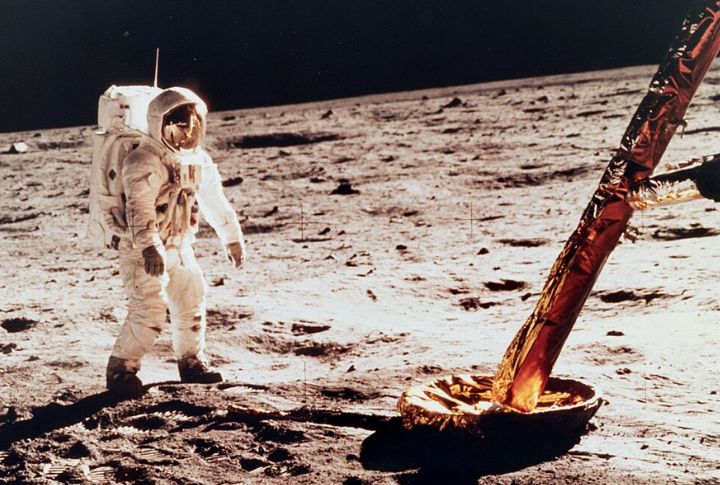
Some moments don’t need headlines; they need a camera. Captured within these photographs are stories that have shaped the world in quiet yet powerful ways. It’s not about who’s in the frame but what was happening when the shutter clicked. Take a closer look and see what these 20 photographs reveal.
Abraham Lincoln Before Cooper Union Speech (1860)
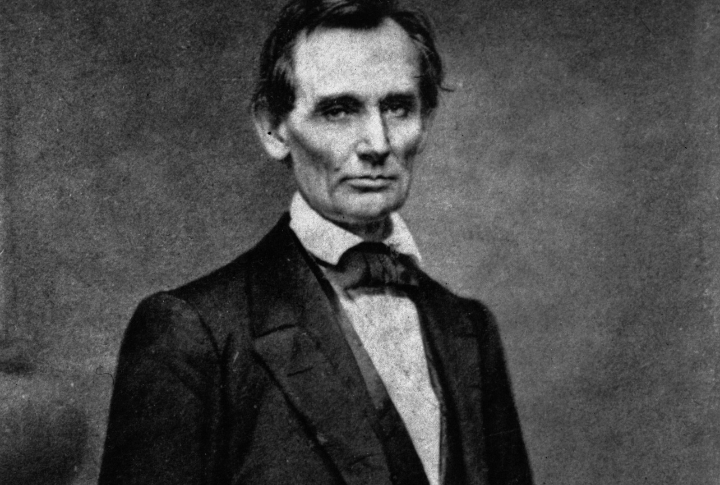
Mathew Brady photographed Abraham Lincoln on the day of his Cooper Union speech, before he became president. The portrait circulated widely in newspapers. Brady would later claim the image helped win Lincoln the nomination. Lincoln’s gaze in the photograph met history with quiet resolve.
East And West Shaking Hands At Promontory Summit (1869)
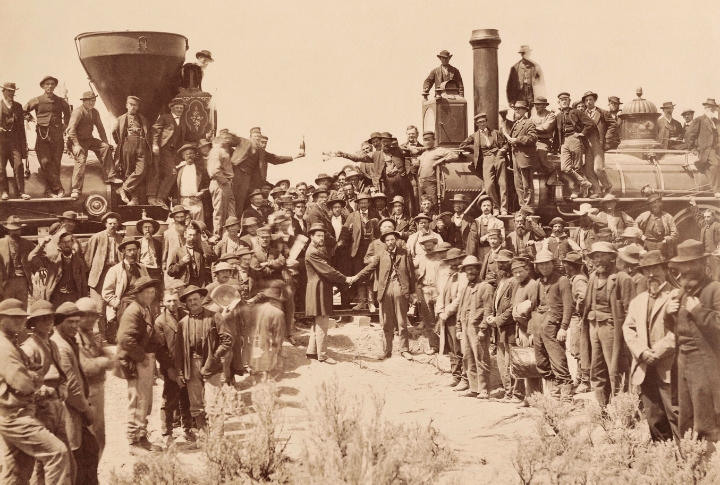
The image of the transcontinental railroad’s completion shows joy and unity: locomotives touching and a symbolic golden spike. Yet the Chinese workers, who labored across treacherous terrain, are conspicuously missing. The lens recorded the moment, not everyone who earned it.
The Hand Of Mrs. Wilhelm Rontgen (1895)
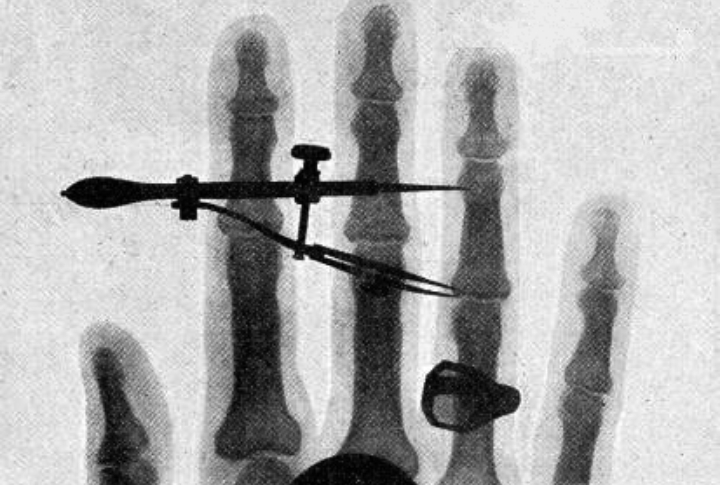
Anna Rontgen likely had no idea her hand would become iconic. Her glowing bones and wedding ring appeared in the world’s first X-ray, taken by her husband Wilhelm. His accidental discovery later earned him a Nobel Prize. That single image opened the door to modern medical imaging.
Shroud Of Turin Negative (1898)
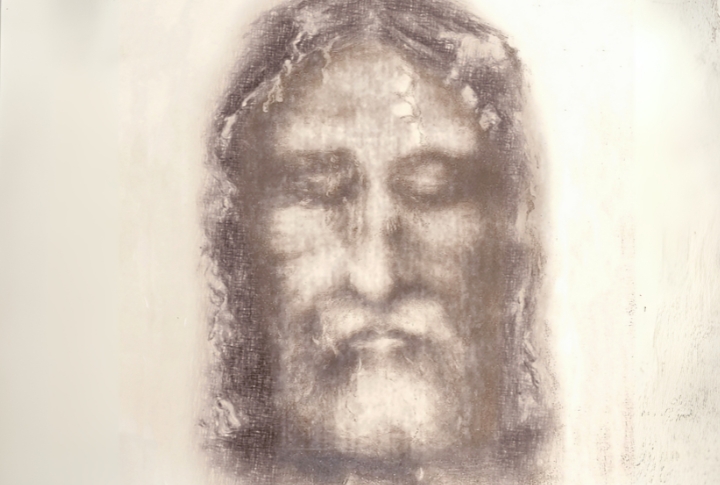
While developing the photographic plate, Secondo Pia was reportedly so shocked he almost dropped it. The negative revealed a vivid face imprinted on the Shroud of Turin. That result caused a sensation: believers saw affirmation, skeptics found fresh controversy.
Isambard Kingdom Brunel Before Launch Chains (1857)
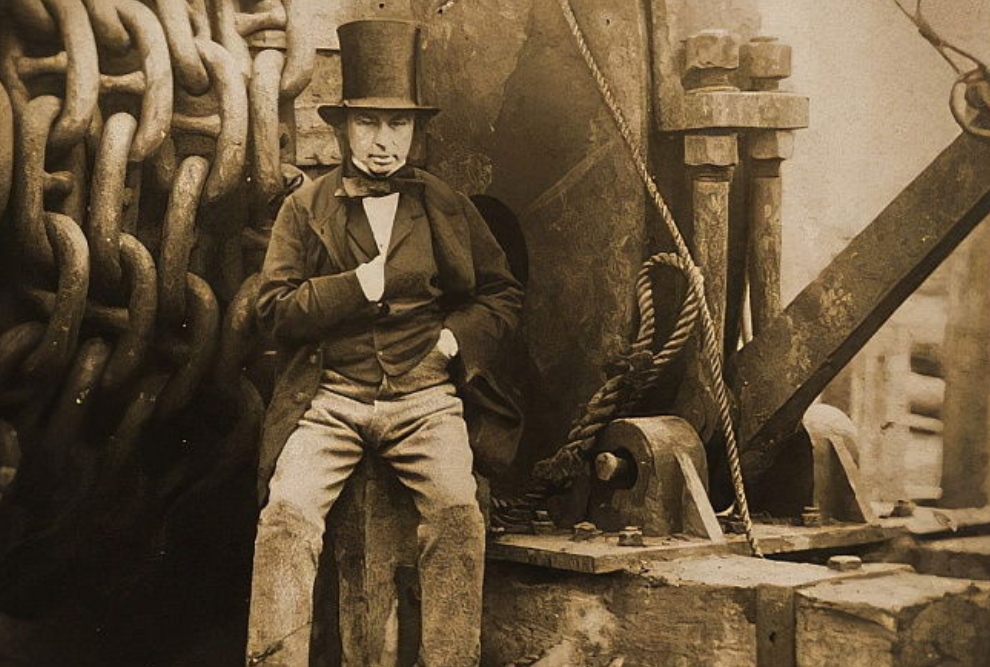
Wearing muddy boots and a top hat, Isambard Kingdom Brunel stands before towering ship chains. The portrait forges an image of the industrial age. Though the Great Eastern faced financial troubles, the photograph remains a lasting emblem of engineering ambition.
Navajo Riders Portrayed In The Vanishing Race (1904)

In trying to preserve what he saw as a fading culture, Edward S. Curtis created a haunting image of Navajo riders dissolving into the land. Widely praised at the time, the photo was carefully staged and rooted in romanticized ideas. Intended as respect, it also carried assumptions of decline that today are critically examined.
Wright Brothers’ First Flight (1903)

In just 12 seconds, history lifted off the ground. Orville Wright flew while Wilbur sprinted alongside, and John T. Daniels, with no photography experience, took the shot. The aircraft looked fragile, but its impact was enormous. No crowds watched, but that moment marked the dawn of powered flight.
Emmeline Pankhurst’s Arrest At Buckingham Palace (1914)
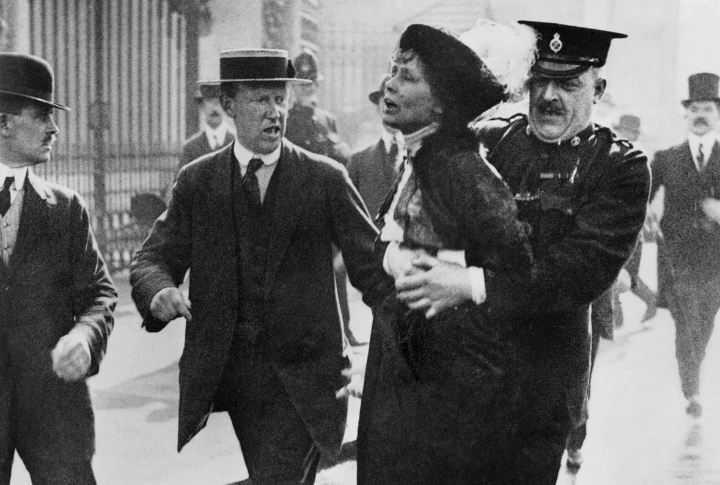
Her goal was simple: hand a petition to King George V. But when Emmeline Pankhurst was arrested outside Buckingham Palace, it became an iconic moment of protest. In the photo, she appears corseted and fearless. The British suffrage movement advanced through refusing to be silent.
Maori Battalion Performing Haka In Egypt (1941)
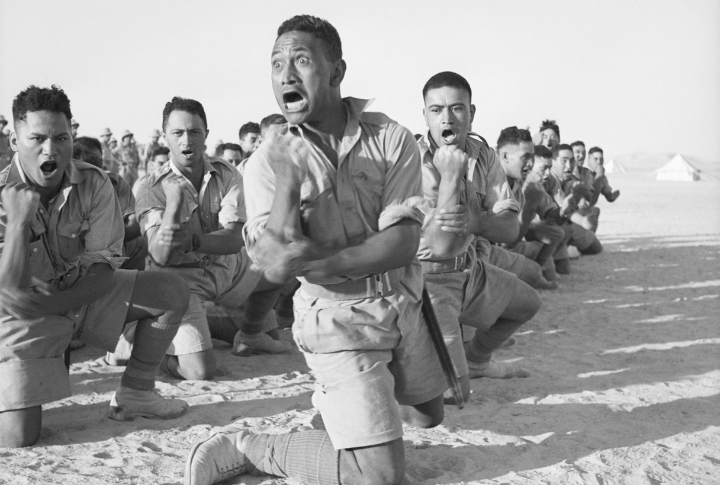
Under the hot Egyptian sun, the 28th Maori Battalion pounded the earth and shouted their haka. It was defiance and cultural assertion all at once. A war photographer caught the moment in Helwan to preserve the presence of a people unwilling to fade into the margins of empire or war.
Migrant Mother By Dorothea Lange (1936)

At 32, Florence Owens Thompson had seven children and a life marked by hardship. Dorothea Lange, a photographer working for the U.S. government, took only six photos before leaving. One of them—Thompson, weary-eyed with children pressed close—became the defining image of the Great Depression.
Ruby Bridges Escorted By U.S. Marshals (1960)
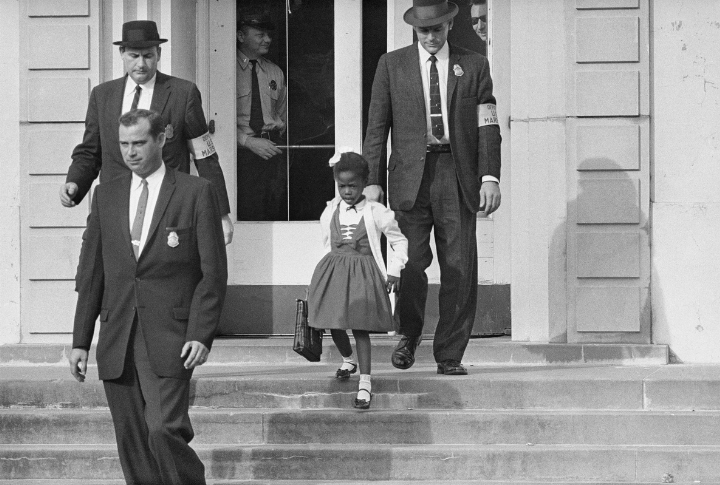
Before she was old enough to write in cursive, six-year-old Ruby Bridges walked through angry crowds to integrate an all-white school in New Orleans. An unknown photographer captured her quiet courage. The four federal marshals at her side were there because the state wouldn’t keep her safe.
President Johnson Signing The Immigration Act (1965)
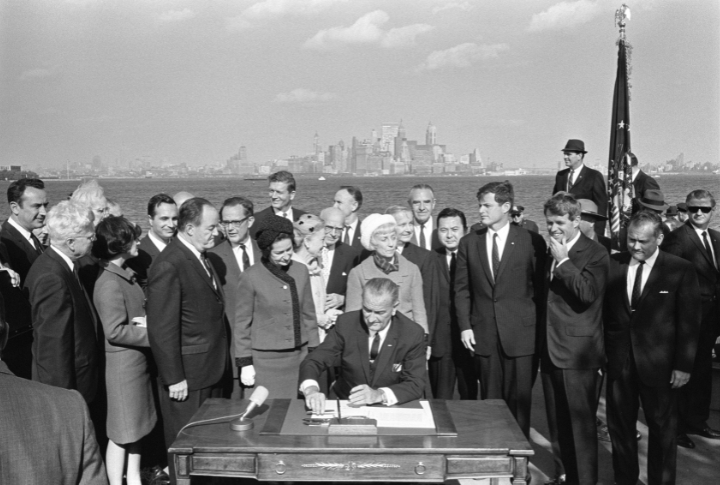
President Johnson chose Liberty Island for the ceremony, then signed the Immigration and Nationality Act of 1965. The law ended 40 years of race-based immigration quotas. Behind him stood Ted Kennedy and those who would benefit from the shift. Though the photo may be lesser known, the impact was enormous.
Black Power Salute At The 1968 Olympics (1968)
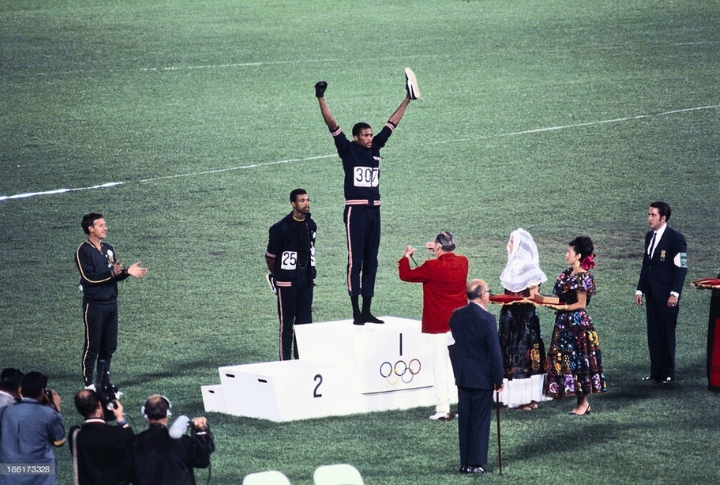
At the 1968 Olympics, Tommie Smith and John Carlos raised their fists in silence during the U.S. anthem after winning gold and bronze. The powerful image was widely published. Silver medalist Peter Norman supported them with a badge. Smith called the gesture a “human rights salute.”
Earthrise From Apollo 8 (1968)
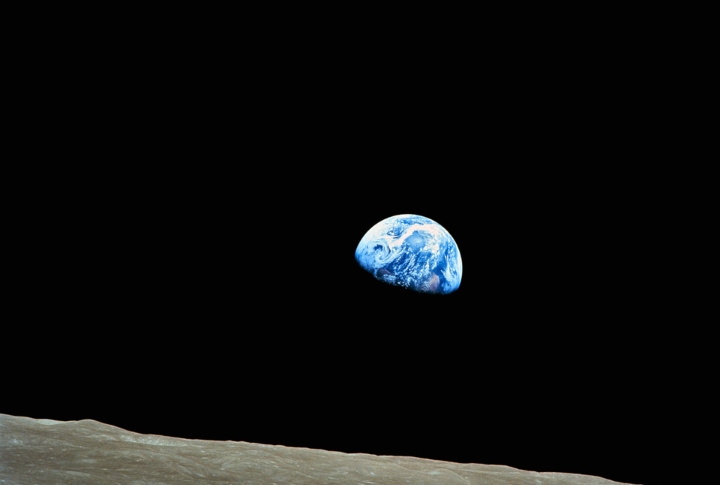
When Apollo 8 orbited the moon on December 24, astronaut Bill Anders instinctively took a photo that wasn’t in the flight plan. Earth appeared, rising above the lunar surface. The image would resonate far beyond the mission and spark a global shift in perspective.
Buzz Aldrin On The Moon (1969)

Neil took the photograph as Buzz posed effortlessly and casually. You can see Armstrong reflected in the helmet visor, along with the flag next to the lander in the shadows. NASA’s public affairs team chose this as the moonshot. Michael Collins stayed in orbit all this time.
Margaret Hamilton And The Code That Powered Apollo (1969)

MIT’s Draper Lab was mostly men, but it was Margaret Hamilton’s code that kept the Apollo lander steady when errors surged. Her programs made real-time decisions, avoiding disaster. That stack of code next to her was functional, vital, and history-making.
Israeli Paratroopers At The Western Wall (1967)

Moments after reclaiming East Jerusalem in the Six-Day War, three Israeli paratroopers stood before the camera: Zion Karasenti, Yitzhak Yifat, and Haim Oshri. Their looks of exhaustion and wonder weren’t staged. The photo became iconic, though the government couldn’t secure its copyright.
Rosa Parks Being Fingerprinted (1956)

Rosa Parks sat still as Alabama State Police fingerprinted her, treating her like a criminal. She had simply refused to give up her seat on a Montgomery bus. The moment was captured: Parks was calm, as Deputy Sheriff D.H. Lackey processed her.
Elvis Presley Meeting Richard Nixon (1970)

Legend holds that Elvis Presley brought a Colt .45 and wore a velvet cape to his December 21 meeting with President Nixon. He wasn’t joking when he asked for a federal narcotics badge, and Nixon handed him one. The image is now the most requested photo in the National Archives.
Tank Man At Tiananmen Square (1989)

With shopping bags in hand, one unidentified man stepped into the path of advancing tanks in Beijing during the Tiananmen Square protests. The moment became symbolic of courage under oppression. His identity remains unknown, but the image endures.

